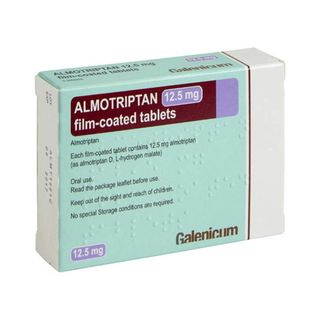
Migraine
As anyone who suffers from migraines will know, a migraine is not just a headache. As well as severe pain, migraines can cause nausea, vomiting and extreme sensitivity to light and sound. There’s not one thing that causes migraines, and different people will have different triggers. These often include tiredness, stress, menstruation and certain types of food and drink. If you suffer from the excruciating pain of migraines, we're here to help you find the right treatments to manage your migraines and and stop the crippling pain in its tracks.
Migraine Treatments
 Almotriptan 12.5mg tablets£16.9919 reviews
Almotriptan 12.5mg tablets£16.9919 reviews
Migraleve Pink Tablets
Migraleve Pink Tablets£7.79189 reviews
Maxalt
Maxalt Melt 10mg Wafers£23.0016 reviews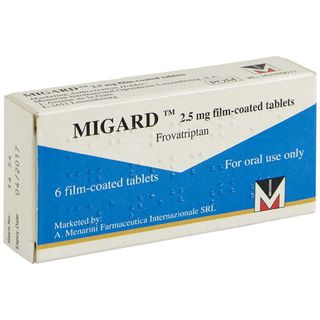
Migard
Migard 2.5mg Tablets£27.994 reviews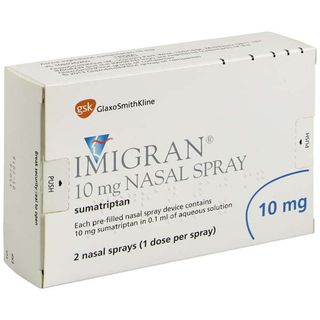
Imigran Nasal Spray
Imigran Nasal Spray (10mg & 20mg)from£19.4012 reviews- Out Of Stock
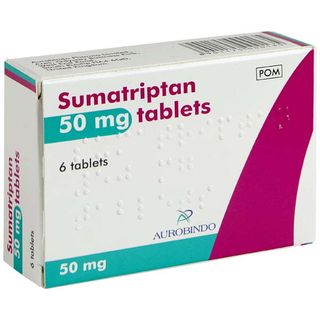
Sumatriptan Tablets
Sumatriptan Tablets (50mg & 100mg)from£19.99458 reviews - Out Of Stock
Zolmitriptan Orodispersible Tablets
Zolmitriptan Orodispersible Tablets - Out Of Stock
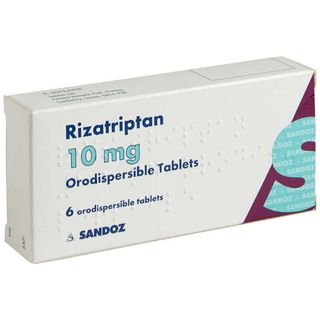
Rizatriptan
Rizatriptan 10mg Orodispersible Tablets£21.9922 reviews - Out Of Stock
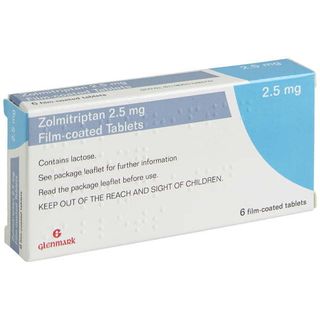
Zolmitriptan
Zolmitriptan 2.5mg Tablets68 reviews - Out Of Stock
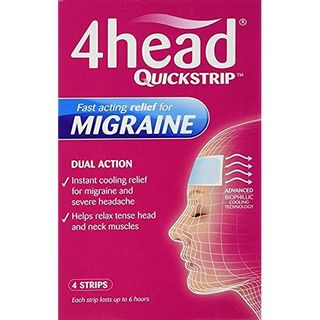
4head QuickStrip
4head QuickStrip - Out Of Stock
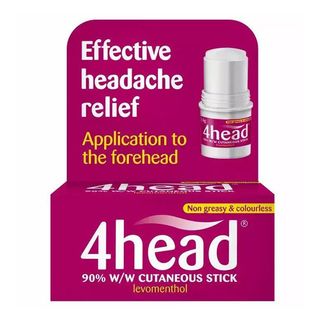
4head Stick
4head Stick - Out Of Stock
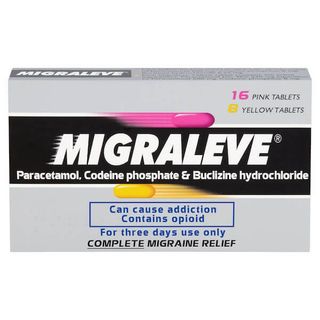
Migraleve Complete
Migraleve Complete Tablets - Out Of Stock
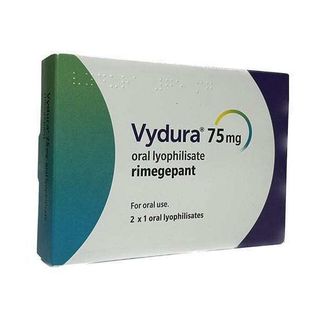
Vydura 75mg Tablets
Vydura 75mg Tablets - Out Of Stock
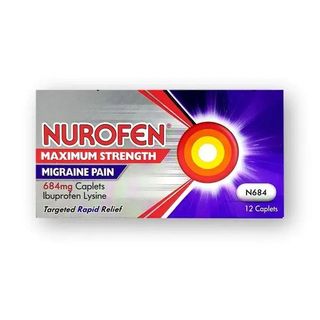
Nurofen Maximum Strength Migraine Pain Caplets
Nurofen Maximum Strength Migraine Pain Caplets - Out Of Stock

Tiger Balm White Ointment
Tiger Balm White Ointment - Out Of Stock
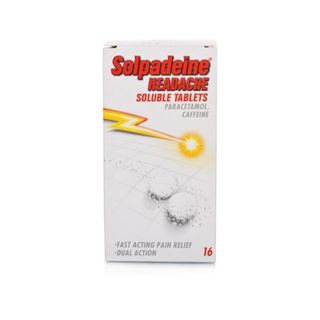
Solpadeine Headache Soluble Tablets (16)
Solpadeine Headache Soluble Tablets (16) - Out Of Stock
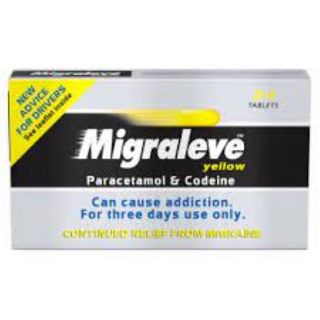
Migraleve Yellow
Migraleve Yellow Tablets
Start your assessment for Migraine
Don't wait to get the medical help you need.
Once you complete a short online assessment about your condition, you will be able to select your preferred treatment and quantity from a list of appropriate options for you.
Reviewed by our UK-based medical team
Takes less than 3 minutes to complete
Approved treatments dispatched same day (before 3pm)
Ordering as easy as 1, 2, 3
1. Find the ideal treatment
We can provide over 1099 leading medicines to treat over 94 conditions.
2. Get a free consultation
Our qualified healthcare professionals will assess your condition and needs.
3. Enjoy speedy delivery
And when the time comes to re-order, it'll only take a couple of clicks.
Advice for Migraine
What are Migraines?
Migraine medication: what works?
Many of us who get migraines regularly come to know when an episode is beginning. While there is no cure, there are various types of medication that can offer relief. If you experience migraines regularly, it’s worth seeking professional advice to see if there’s an underlying cause.
Migraine tablets vary in price, especially if you buy them over the counter. The Independent Pharmacy – a regulated UK online pharmacy – makes ordering your migraine medication quick and easy, with professional service and fast delivery. Be safe and always follow the guidelines that come with any form of medicine.
Migraine is a very common condition that involves a severe headache that can also include other symptoms such as nausea, vomiting and sensitivity to light or sound. Migraines normally begin in early adulthood and are more common in women. It is thought they affect around 1 in 5 women and only around 1 in 15 men. Migraines normally gradually improve as people get older, although in some cases they can get worse.
Migraines are very individual with different people experiencing different symptoms with varying impacts on their lifestyle. At the most extreme end, migraines can occur several times a week and involve severe pain, sickness and sensitivity to light and/or sound, lasting days at a time. At the other end of the spectrum, migraines may only occur occasionally with months, or even years, between attacks that can be fairly mild and short-lived.
As you can see, migraines can have a massive impact on your quality of life and in some cases can stop you from working. It is important that you treat migraines effectively and follow preventative measures to reduce their frequency.
What causes Migraines?
Migraines are thought to be caused by abnormal brain activity that affects nerve signals, chemical transmitters and blood vessels within the brain. Although it is not clear what the exact cause of the abnormal activity is, it is thought that your genes may make you more likely to experience a migraine following exposure to a specific trigger factor.
Trigger factors are stimuli that cause the changes in the brain that start a migraine. There are many proposed triggers and each migraine sufferer will have a specific trigger(s) that they are aware of that will bring on a migraine.
Migraine trigger factors can include:
- Emotional Triggers: stress, anxiety, tension, shock, depression, and excitement.
- Physical Triggers: tiredness, shift work, poor posture, neck or shoulder tension, jet lag, low blood sugar, strenuous exercise.
- Dietary Triggers: missed or irregular meals, poor diet, dehydration, alcohol, tyramine (food additive), caffeine (in coffee or tea), specific foods such as cheese, chocolate or citrus fruits.
- Environmental Triggers: bright lights, flickering lights or screens, smoking, loud noises, changes in humidity or temperature, strong smells, a stuffy atmosphere.
- Medicinal Triggers: some sleeping tablets, some oral contraceptive pills, some HRT (hormone replacement therapy).
- Hormonal Triggers: some women find that they experience migraines around the time of their period, this is possibly due to low levels of oestrogen around this time.
What are the symptoms of a Migraine?
Stages of a migraine
To understand the symptoms of a migraine, it is also important to understand the phases of a migraine. They will normally have four distinct phases, although some people may not experience all of them. The four distinct phases of a migraine are:
- Prodromal phase: generally involves changes in mood, behaviour, energy levels or appetite that occur from a few hours to days before a migraine attack.
- Aura phase: the visual stage that occurs closer to the migraine attack, normally 5 minutes to 1 hour before. It usually involves flashes of light or blind spots in the vision.
- Headache phase (Migraine attack): the phase that involves the typical migraine symptoms including throbbing headache, sensitivity to light and sound, as well as nausea and vomiting. This can last for anything from a couple of hours to 3 days depending on the severity of symptoms and the treatment used.
- Resolution stage: as the symptoms of the headache phase leave you may be left feeling drained or tired for a number of days afterwards.
For some people the first sign that a migraine is about to occur will be the aura phase, which occurs in around one third of sufferers. This visual ‘warning’ stage usually lasts for between 5 minutes and 1 hour and can involve the following symptoms:
- Flashing lights or patterns
- Blind spots
- Tingling and numbness starting in the hand, moving up the arm to the face
- Dizziness
- Difficulty speaking
- Headache behind the eyes
The main symptom of a migraine (during the migraine attack) is a severe headache that occurs on one side or across the front of the head. It can, however, occur across the whole head and even affect the face or neck in some people. The headache experienced with a migraine is normally an intense throbbing that gets worse with movement.
Additional symptoms that may be experienced with a migraine include:
- Nausea
- Vomiting
- Sensitivity to light and sound
- Dizziness
- Feeling Drowsy
- Sweating
- Poor concentration
- Feeling very hot/cold
- Diarrhoea
- Stomach pain
Not everyone will experience all of these symptoms and they may vary with each migraine attack. It is possible to experience these additional symptoms without the typical migraine headache on some occasions.
You should seek urgent medical attention at the hospital if you have any of the following migraine symptoms:
- Paralysis/weakness of one or both arms or the face
- Slurred speech
- A sudden onset headache with agonising pain
- Fever, stiff neck, confusion, seizures, double vision, or a rash.
How are Migraines diagnosed?
There is no specific way/test to diagnose migraines. A diagnosis is normally made by your GP; it is based on the pattern and severity of headaches along with the occurrence of other associated symptoms as well as your response to migraine treatments. This can take time depending on the frequency, severity and associated symptoms of your migraines.
To aid your diagnosis it is helpful to keep a migraine diary to keep an accurate record of your condition. Your migraine diary should include:
- Time and date of the migraine attack
- What you were doing at the time
- If there were any obvious or potential trigger factors
- Which migraine stages have you experienced
- What symptoms have you experienced
- Whether you took any medication and if it was effective
Based on the contents of your migraine diary, the symptoms that you experience and your response to any painkillers or migraine treatments, an accurate diagnosis can be made.
What treatments are available for Migraines?
Migraines cannot be cured, although they may ease or even disappear over time. Migraine treatment aims to relieve symptoms and sometimes prevent the onset, if taken early enough. Migraine treatment can range from over-the-counter painkillers to prescription treatments depending on the symptoms and severity.
Painkillers
Simple painkillers such as paracetamol, ibuprofen or aspirin, can help to relieve the throbbing headache associated with a migraine attack if they are taken early enough. You should take them at the first onset of symptoms, do not wait until you are already experiencing a painful headache as it will be too late and they may be less effective. Soluble painkillers are absorbed into your system quicker and may be more effective at relieving migraine pain.
If simple painkillers do not relieve pain, stronger painkillers containing codeine, such as Solpadeine or Nurofen Plus, may be more effective.
Take care when using painkillers as overuse can be dangerous. Regular use of any painkillers can cause headaches and make migraines worse.
Triptans
If you have been diagnosed with migraines by your GP and they cannot be controlled with simple painkillers, you will be prescribed a Triptan. Triptans (also known as 5-HT1 agonists), which are taken alongside painkillers, cause the blood vessels in the brain to contract. As some of the changes that occur in the brain to trigger a migraine attack are believed to involve the blood vessels widening, Triptans help to reverse this process and relieve the symptoms of migraine. They may also have some effect by stabilising some of the chemical changes that occur in the brain during a migraine attack.
Each Triptan has a very similar mode of action, however each can work differently depending on the person. Although, there are slight variations in effectiveness and side effects, it is much more important to find the right drug for you. This may mean trying a few different Triptans before you find the most effective one for you. It is recommended by The British Society for the Study of Headache (BASH) that you try each individual Triptan on three separate occasions before deciding on its effectiveness. If you feel it is not effective, you should then try a different Triptan or higher strength.
When choosing the correct triptan it is worth considering the method of administration as this can help to improve the effectiveness. Tablets are the standard form of triptan that are effective in most people, however if you experience nausea or vomiting they may be difficult to take. Tablets can also take longer to have an effect than other treatments and may not be the best option if a fast onset of action is required. Tablets need to be taken early on in a migraine attack for a maximal effect as there is some evidence that the absorption of drugs may decrease during a migraine attack.
Nasal sprays or wafer melts may be a better option in cases where tablets are not suitable due to the need for a quick onset of action or where nausea/vomiting makes swallowing impractical.
What triptans are available?
Tablets
- Sumatriptan (Imigran) 50mg & 100mg
- Almogran (almotriptan) 12.5mg
- Migard (frovatriptan) 2.5mg
Nasal Sprays
Wafer Melts
- Maxalt Melt (rizatriptan) 10mg
Each Triptan has a slightly different dose and administration method; you should check the individual instructions for each treatment. For maximum effectiveness, the Triptan should be taken at the onset of the migraine headache (the migraine attack phase), not during the prodromal or aura phases. It has been shown that taking triptans at this point in a migraine makes them most effective. In most cases you can repeat the dose after 2-4 hours if the treatment was effective and the headache returns.
Triptans can be taken alongside painkillers and anti-sickness medicines to help treat all symptoms that occur during a migraine attack.
Anti-sickness treatments (anti-emetics)
Anti-sickness treatments, such as Buccastem, can be taken to relieve the symptoms of nausea and vomiting that are experienced as part of a migraine attack. Like painkillers, anti-sickness treatments for migraine are best taken as early as possible in an attack if you know you usually experience nausea. The earlier they are taken in the migraine attack, the more effective they tend to be at treating the nausea and sickness.
Buccastem is the first line treatment for nausea and vomiting and is very effective at preventing symptoms. Buccastem is a buccal tablet meaning it is dissolved between the lip and gum. This means there is no need to swallow a tablet when feeling nauseous. Absorption of the drug through the gums allows it to be absorbed more quickly meaning a faster onset of action.
Can Migraines be prevented?
The most important method of migraine prevention is to identify and avoid triggers. By keeping a migraine diary as detailed above in ‘Diagnosis’ you can start to identify triggers and then learn to avoid any triggers that bring on a migraine. Common migraine triggers are listed above in ‘Causes’. This list is only the most common triggers, you may find that there are other factors that you are sensitive to; migraine triggers are different from one individual to another.
If you experience more than 5 days of migraines in a month, you may benefit from preventative treatment from your GP. There are many medical treatments for the prevention of migraines, such as topiramate, propranolol and gabapentin, which may be effective if you have frequent, severe migraines. If you think you fall into this category you should book an appointment to discuss preventative migraine treatment with your GP and take a comprehensive migraine diary to aid diagnosis.
Alternatives
Alternative OTC (over the counter) Medication
There are some over the counter medications that can be used initially to try and combat migraine pain and nausea. Some of the products include;
- Paracetamol
- Ibuprofen
- Aspirin
- Buccastem M to help with nausea.
If you suffer from sensitivity of light you should try and stay in a dimly lit room until these symptoms ease.
Migraine FAQs
- A migraine headache is usually an intense, throbbing pain on one, or sometimes both, sides of the head.
- Most people with a migraine headache feel the pain in the temples or behind one eye or ear, although any part of the head can be involved.
- Besides pain, migraine also can cause a number of other symptoms; nausea and vomiting as well as sensitivity to light and sound can all occur. Some people also may see spots or flashing lights or have a temporary loss of vision.
- Migraine can occur almost any time any time of the day, though it often starts in the morning.
- The pain can last a few hours or up to 72 hours. Some people get migraines once or twice a week whereas others may only suffer once or twice a year.
- A tension headache is usually a mild to moderate pain, it's distracting but not debilitating. It affects both sides of the head and rarely causes sensitivity to light.
Triptans are the newest and most popular type of migraine treatment. They include almotriptan, naratriptan, rizatriptan, sumatriptan, zolmitriptan, and are available as various different branded and generic migraine treatments from our Online Pharmacy.
Triptans work by constricting the widened (dilated) blood vessels in the brain that are thought to occur during a migraine. They may also stabilise the changes in activity of some brain chemicals that occur during a migraine attack. Triptans are an 'as required' migraine treatment; they are only taken when necessary to treat a migraine attack. Triptans can help to to halt the onset of migraine symptoms if it is taken at the correct time, at the beginning of the headache phase.
There is no best migraine treatment that suits everyone. All Triptans would probably work well in most people with migraine. However, there is some evidence to suggest that some are slightly more effective than others; but also, that side effects may vary between each different Triptan and each can have different levels of effectiveness in separate individuals.
Therefore, if the first Triptan you try does not work as well as desired, or causes side effects, after three separate attempts it is definitely worth trying a different Triptan that may be more suited to you.
You should take your triptan as you start to feel a slight headache develop and not before. Triptans are effective at treating a migraine in its early stages and can prevent a full-blown attack, however they are not preventatives and should not be taken before a migraine occurs. Triptans are designed to work rapidly - within an hour or so, to treat migraines quickly.
When migraine symptoms begin:
- If you have a Triptan, take it as soon as you feel a headache.
- Take painkillers or anti-sickness medication if necessary.
- Drink fluids, if you don't have nausea during your migraine.
- Lie down and rest in a dark, quiet room (if that is practical).
There are no objective tests for migraine; the diagnosis is on the basis of the history and pattern of symptoms over time as well as response to any drug treatments tried. This is why keeping a migraine diary can be helpful.
Things that should be covered in a migraine diary are:
- How often you have headaches.
- Where the pain occurs.
- How long the headaches last.
- When the headaches happen (such as during your period or due to other external stimuli).
- Other symptoms that occur (such as nausea or blind spots).
- Any genetic family history of migraine.
- Any medicines you are taking, even the over-the-counter medicines & supplements.
- Any medicines you have taken to treat your symptoms and how effective they were.
Migraines are most common in females; 75% of migraine sufferers are women. There is no known cause for the difference in migraine occurrence between the sexes.
Nausea causes poor absorption of tablets into your body and many people find it hard to take tablet treatments when they are experiencing nausea.
Prochlorperazine (Buccastem) is an effective and fast-acting anti-sickness treatment. It comes in a buccal tablet form; it dissolves between the gum and cheek, without the need to swallow. This can be useful if you feel sick and do not wish to swallow a tablet. Anti-sickness medicines work best if you take them as soon as possible after symptoms begin.
If you take painkillers, they may remain in your stomach if you are experiencing nausea and vomiting. This means they will not be absorbed well and you may even bring the tablets back up. If this is the case, use soluble (dissolvable) painkillers. These are absorbed more quickly from your stomach and are likely to work better. You can take anti-sickness treatment in addition to painkillers.
Taking painkillers or Triptans too often for tension-type headaches or migraine attacks can cause a condition known as medication-induced headache. It is also known as a medication-overuse headache.
It is a common cause of headaches that occur daily, or on most days. About 1 in 50 people develop this problem at some time in their life. If you find that you are getting headaches on most days and you are regularly taking Triptans or painkillers then you should discuss this with your doctor.
Changing blood sugar levels can be a trigger for migraines. To keep blood sugar levels stable try to ensure you:
- Always eat breakfast - even if it is just a piece of fruit and an oatcake.
- Aim to eat little (but well balanced) meals often, rather than one or two large meals a day. If you need to eat between meals, snack on healthy foods with low sugar content (nuts and dried fruit, oatcakes and hummus or plain bio yoghurt with nuts and seeds).
- Mix carbohydrate with protein and/or fat to increase the slow release energy (e.g. wholemeal toast and peanut butter is better than white bread and jam).
- If you feel like chocolate or biscuits, try a piece of fruit or a handful of nuts and raisins instead.
It is a well-known myth that if you avoid chocolate, cheese and red wine, you won't get migraine. Although these can all be triggers for migraines, there are many different triggers and what may affect one person does not necessarily affect another.
For most people it is not just one trigger but a combination of factors which can trigger a migraine attack. Read the ‘Causes’ section above for more information on common trigger factors.
There may be a hereditary predisposition to migraines, as it does tend to run in families although not everyone in the family will suffer with them. There are many factors involved in the occurrence of migraines, not all of which are understood. There will usually be a number of factors influencing whether you develop migraines, not just your family history.
Alcohol can be a migraine trigger for certain people. For this reason, migraine sufferers tend to consume alcohol less often than most. Red wine is thought to be a particular culprit, although studies show that other alcoholic drinks are equally likely (sometimes more so) to be the cause. A bad hangover also has the potential to cause a migraine in those who are prone to the affliction.
Obesity does not directly cause migraines, however, it is a risk factor and may mean that it’s more likely – depending on how overweight the person is. Certain research shows that as we gain weight, migraine symptoms can also become more severe.
Living a healthy lifestyle, getting enough exercise and getting plenty of sleep can all help with this. If you are overweight, then weight loss will not necessarily lead to curing your migraines, but they may become more bearable and less frequent.
The NHS may soon start using Botox injections to treat chronic migraines. While the muscle-paralysing injections are popular as a cosmetic ‘anti-wrinkle’ treatment, the nerve-blocking effects may also help to alleviate some of the painful symptoms of associated with the condition.
Precision tinted lenses are thought to help reduce the discomfort experienced when a migraine attack occurs. They do this by normalising excessive brain activity, which can sometimes act as a trigger. Available from Amazon and other outlets, those who suffer from migraines frequently may wish to try tinted migraine glasses as a preventative measure.
Some research shows that taking magnesium tablets (usually magnesium oxide) once a day can help to prevent menstrual-related migraines. The recommended dosage, if you tend to get migraines around your period, is 400 to 500 milligrams a day.
Guides for Migraine
Migraine Hangover: What Is The Postdrome Phase Of Migraine?
Migraine Prodrome
Best Over-the-Counter Migraine Relief
Tips On How To Avoid Summer Headaches And Migraines
Can The Cold Weather Trigger My Migraine?
How To Tell If Your Headache Is a Migraine: The Warning Signs
We've written 15
more guides
for Migraine
We also offer health & advice tailored to you.



